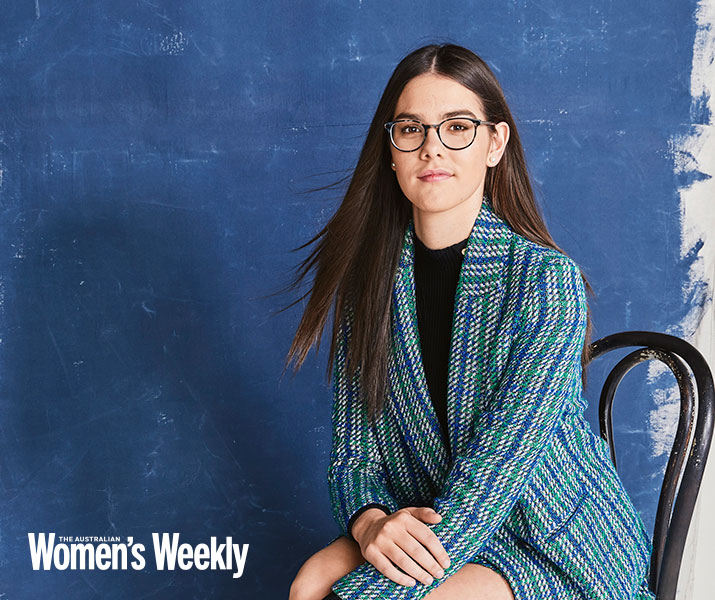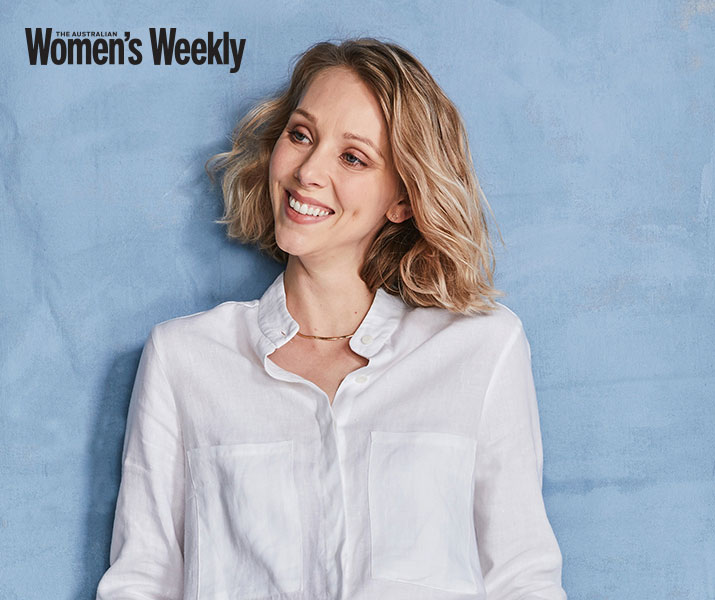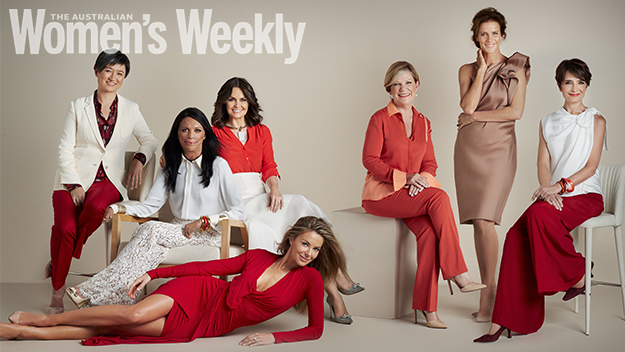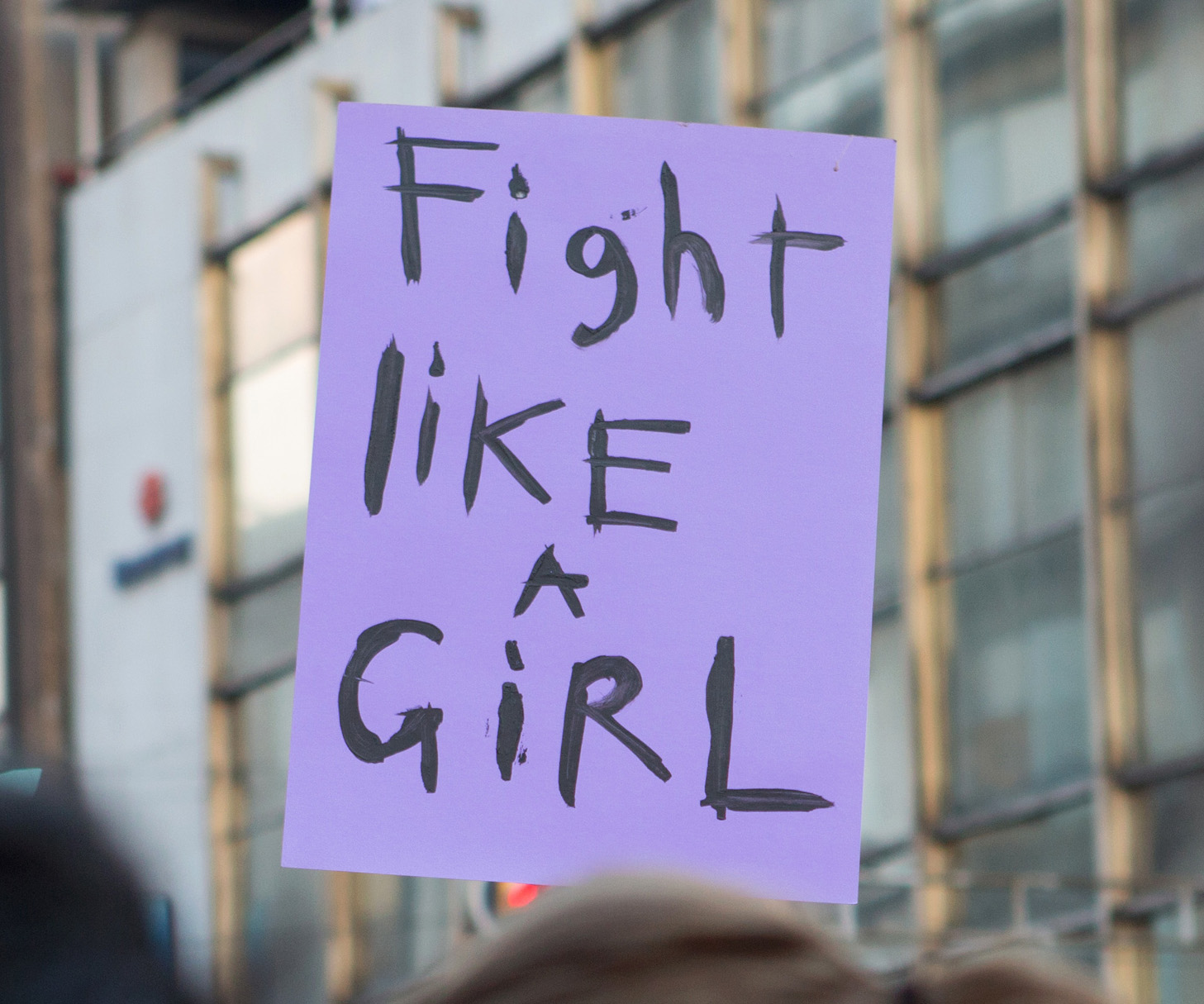Innovation and Technology

Macinley Butson
(Credit: Supplied)Macinley Butson, 18
Inventing radiation protection for breast cancer patients.
Sitting around the dinner table one evening, Macinley Butson’s father, a medical physicist, mentioned a disturbing statistic: that one in 14 women with breast cancer undergoing radiotherapy develop cancer in their healthy breast. Macinley was shocked.
An inventor from an early age – Macinley created a pair of adjustable tint sunglasses at just seven – the passionate year 10 student dedicated herself to a solution. “I’ve been working on it ever since,” says Macinley.

Macinley has developed SMART Armour, designed to protect a woman’s healthy breast while receiving radiotherapy for breast cancer.
(Credit: Photo by Macinley Butson)As a result, Macinley has developed SMART Armour (Scale Maille Armour for Radiation Therapy) which protects a woman’s healthy breast during radiotherapy.
“It’s been a long process,” she says. “I’ve come close to giving up, but a friend had cancer and passed away at the end of last year. It inspired me to keep going.”
The prize money would help raise awareness, and provide training. “My dream is to have every breast cancer radiotherapy patient have access to SMART Armour,” she says.

Evelyn Chan, 33
Virtual reality to reduce medical trauma in children.
Paediatrician Evelyn has given children thousands of injections, and it’s often difficult. The kids are scared and sometimes medical staff have to pin down a child who doesn’t understand what’s happening. “I’ve had kids kick, bite or scream,” Evelyn says. “You get needle-stick injuries.”
The experience led her to develop Smileyscope, a virtual reality experience that calms and entertains children while doctors work.
“We talked to 100 children and families who’d had a traumatic blood sample taken, digital designers and producers. They were inspiring. We combined their best practice.”
Smileyscope recently ran the world’s largest clinical trial for virtual reality in health care. They found a 60 per cent decrease in pain, a 40 per cent decrease in anxiety and a 75 per cent drop in parental distress. The need to pin children down for procedures was halved.
“It’s an exciting area, using technology to replace drugs or support medication,” Evelyn says. The prize money would allow this small start-up to expand its network and get into more clinics.

Lina Qasem, 28
Awakening girls’ passion for STEM through coding and robotics.
Lina Qasem’s passion for coding and robotics has made her a rising star in the tech world, and it’s a passion she wants to share. Nothing makes Lina happier than seeing young girls come to life as they learn about science, technology, engineering and maths (STEM).
Two years ago she launched Robofun, a coding academy for kids that uses children’s natural curiosity to teach them STEM. The academy is open to all young people, but focuses on girls to address gender imbalance in the industry.

Lina’s Robofun academy gives kids hands-on experience with STEM subjects.
(Credit: robofun.com.au)“My dream is to engage more girls in STEM to create a more diverse tech industry and achieve gender equality,” Lina says. Working with schools, libraries and parents, she provides children with a hands-on learning experience. “We hire qualified female instructors to provide role models to our students.”
Lina holds free workshops in disadvantaged areas and offers instalment payment plans to ensure STEM learning is available to all. The Women of the Future bursary would allow her to purchase more equipment, expand her marketing efforts and invest in more training for her instructors.
Entrepreneur and Business

Sheree Rubinstein, 31
Encouraging women’s business through a female focused co-working space.
The daughter of small business owners who often worked from home, Sheree grew up in a business. “I had to share the kitchen with six secretaries and often came home to meetings on our dining room table or in my bedroom. I’d sit, listen and absorb,” she says.
After training as a corporate lawyer, she launched a space for women-led enterprises to flourish. More than just a co-working area, One Roof offers networking events, introductions, an online resource hub, yoga and dinners with investors, among other things.
“We are office space, event space and provide business support to our members,” Sheree says. The bursary would be used to expand One Roof and offer scholarships to those who can’t afford the suite of services.

Courtney Holm, 33
Pioneering circular fashion to cut waste and emissions.
In Tasmania there’s an old mill that can turn fabric off-cuts into new yarn. It’s the only one in Australia, and designer Courtney Holm will use it as part of her mission to reform the wasteful fashion industry. Her label, A.BCH, takes responsibility for every garment it creates, ensuring it’s ethically crafted, and then recycled.
“At A.BCH we’re just getting started with the customer when they make that purchase,” Courtney says. Launched two years ago, A.BCH purchases raw materials ethically and educates customers about how to take responsibility for their garments. Each customer is provided with a care manual for their clothing and has access to free repairs.
“We want to collect that garment at the end of its life, as well as all the off-cuts produced during production. We’re taking old things, wasted things, and turning them into new yarns,” she says. The prize money would allow Courtney to finish the first stage of her trial to eliminate waste and expand it to the broader industry.

Holly Rankin, 27
Creating socially responsible forums through music.
After Holly lost her little sister when she was 14-years-old she sought solace in music, and understands its power. “This shaped who I am and what I do today,” she says.
As performer Jack River, Holly has written and performed gritty pop anthems, founded music festivals and built an engaging brand. But her mission has always been to use her talent to drive political and social awareness, and transform that into action.
WATCH BELOW: The official music video for Jack River’s “Fool’s Gold”. Article continues after video.
“I started a company creating music festivals because I believe in brands and experiences that connect people on the ground, and I’m passionate about creating cultural events with social meaning,” Holly says.
She recently hosted a discussion on climate change, featuring scientist Lesley Hughes and science writer Dr Karl Kruszelnicki, as part of the Sydney leg of Jack River’s latest tour, which was free for ticket holders.
Next, she has her sights set on authenticity in social media. She wants to create a platform to amplify the stories of female leaders and change makers. The prize money would help Holly upscale her work.
Community, Health and Charity

Rona Glynn-McDonald, 23
Sharing Aboriginal and Torres Strait Islander cultures.
Rona is the founder of Common Ground, a not-for-profit that records and shares First Nations cultures. She’s inspired by her grandmother, Freda Glynn, a formidable leader, media pioneer and powerful voice for Aboriginal people. “I’ve been guided by incredible women throughout my life,” Rona says.
As a proud Kaytetye woman, Rona’s also driven by a passion to provide for disadvantaged Indigenous young people and communities impacted by social exclusion.
WATCH BELOW: The 2018 Women of the Future Awards Announcement Lunch. Article continues after video.
“Common Ground was born out of the idea we needed to create the space for all Australians to learn about First Nations experiences,” Rona says.
Since Common Ground started a year ago, more than 120,000 people have used the online resource. Common Ground recently completed a national campaign, The First Nations Bedtime Stories Challenge, in which they shared five short films from Central Australia, told in local languages.
She hopes to use the Women of the Future bursary to connect with Indigenous people in Australia and globally. “My dream,” she says, “is to create an Australia that celebrates and embraces our First Peoples.”

Grace Lillian Lee, 31
Developing Indigenous art into wearable fashion.
Raised by a creative mother and artist father, fashion designer and artist Grace had plenty to inspire her. But the biggest driver, she says, was her grandmother.
“I call her a hidden generation,” says Grace. “She brought my father up identifying as Chinese and didn’t acknowledge her Torres Strait Island lineage. This made me have so many questions I wanted to explore.”
Grace celebrates her identity through art and fashion, and founded First Nations Fashion and Design (FNFD) to mentor and support other Indigenous artists. Her purpose is to guide artists and communities towards developing creative work into commercially viable fashion.
Grace has already achieved recognition for her work, has produced Indigenous art events in Australia and Papua New Guinea, and held workshops in cities and remote communities nationally. Her dream is to expand FNFD so it can support young Indigenous women to create small businesses in art and fashion.
“I don’t believe we’ve seen what Indigenous design looks like yet. We’ve scraped the edges but have yet to see the full potential.”

Madeleine Buchner, 26
Supporting and recognising young carers.
Madeleine was three years old when her brother first went to hospital. His childhood was a continual round of illness, treatments and hospitalisation.
“I grew up in hospital wards,” she says. By six, Madeleine could manage his medication and monitor his breathing. “I took on responsibilities beyond my age. I never realised I needed support, or that I deserved it,” says Madeleine. “I felt I had no right to crave attention.”
Feeling isolated and overlooked, Madeleine started fundraising for sibling support programs when she was nine. Then, at 15, Madeleine’s mum was diagnosed with breast cancer, and her responsibilities increased. A year later, Madeleine launched Little Dreamers Australia, the only not-for-profit supporting young carers.
Little Dreamers now has a staff of 12 and runs programs for 3000 young carers each year, as well as campaigning and raising awareness. “Half of young carers live below the poverty line. Only four per cent finish high school,” says Madeleine. They’re also more likely to suffer depression and anxiety. Madeleine’s dream is to create a training program and establish programs in regional Australia.
“It’s important for kids to live their own lives,” says Madeleine. “Little Dreamers gives them the childhood they deserve.”
The winners of each category of the 2019 Women of the Future award will be announced at a lunch on September 11. Read more about each finalist’s work in the September issue of The Australian Women’s Weekly, on sale now.




